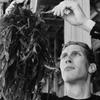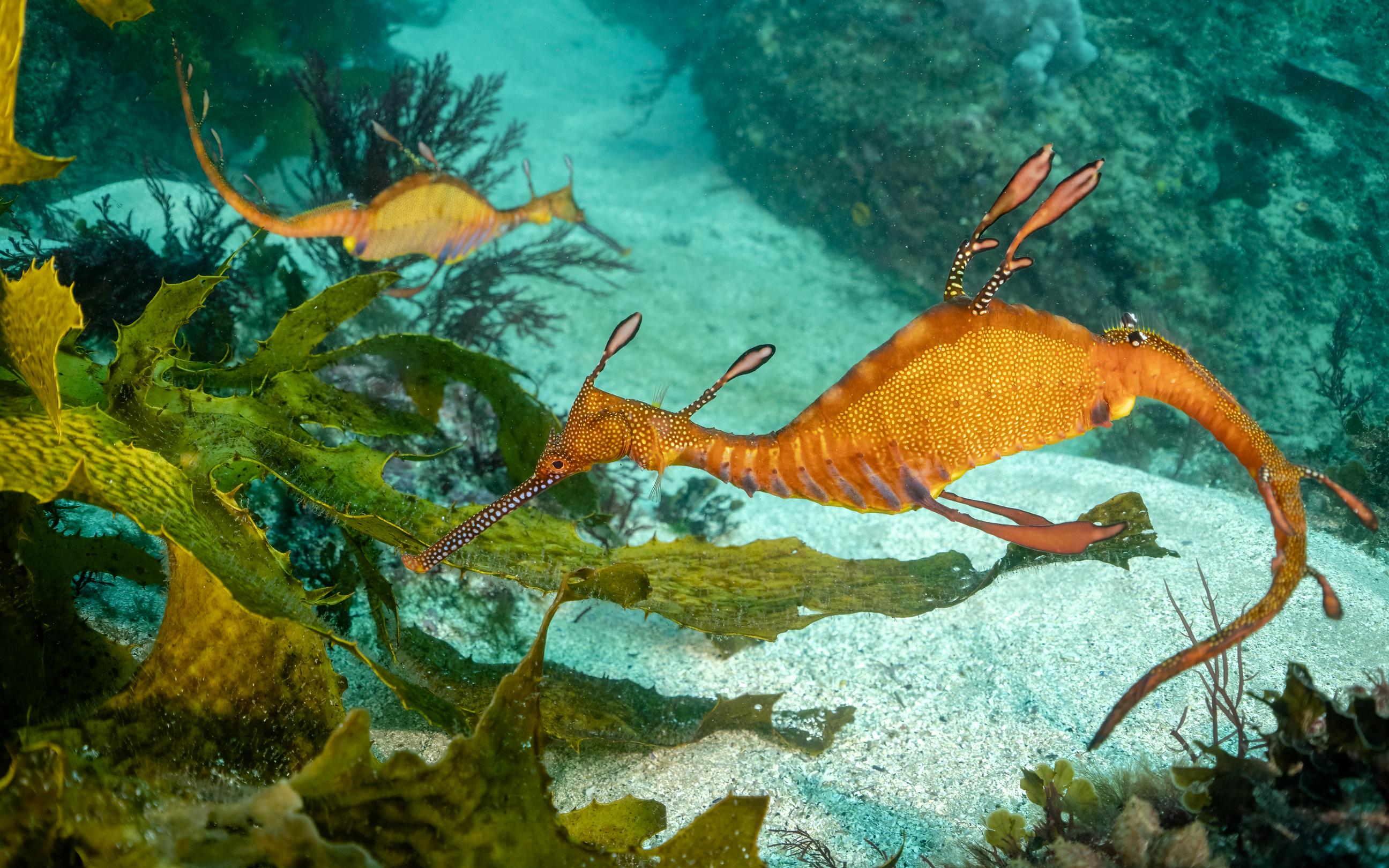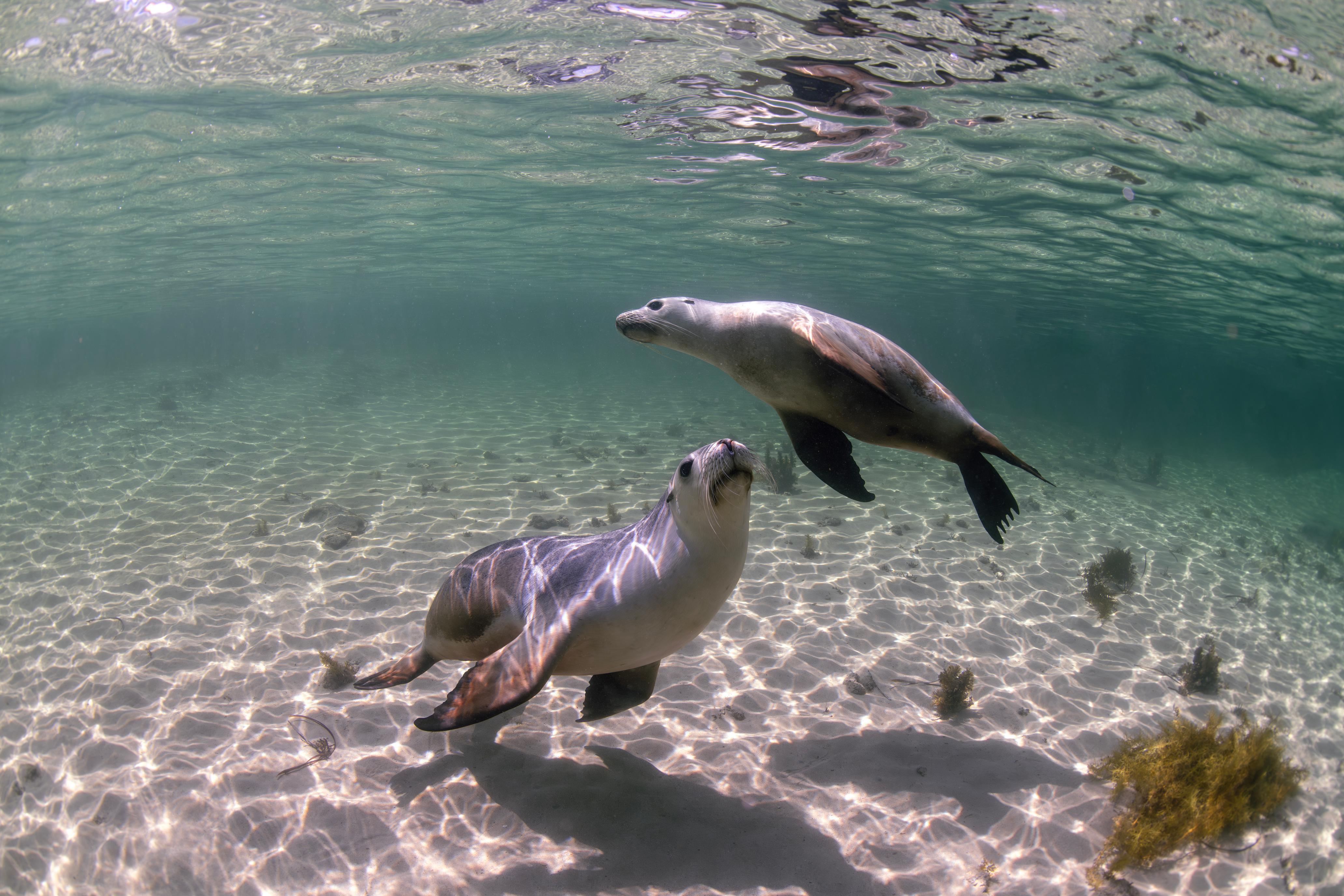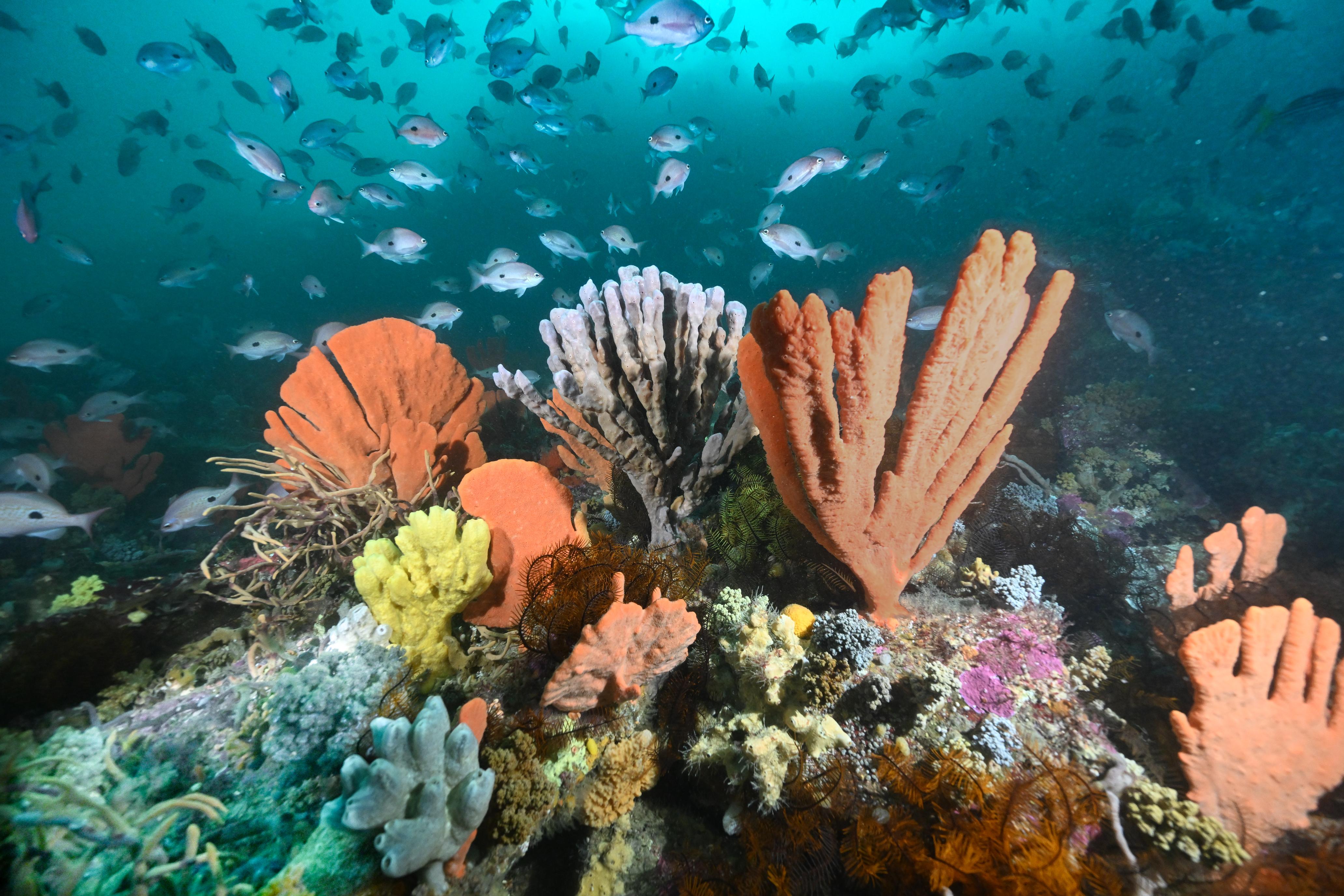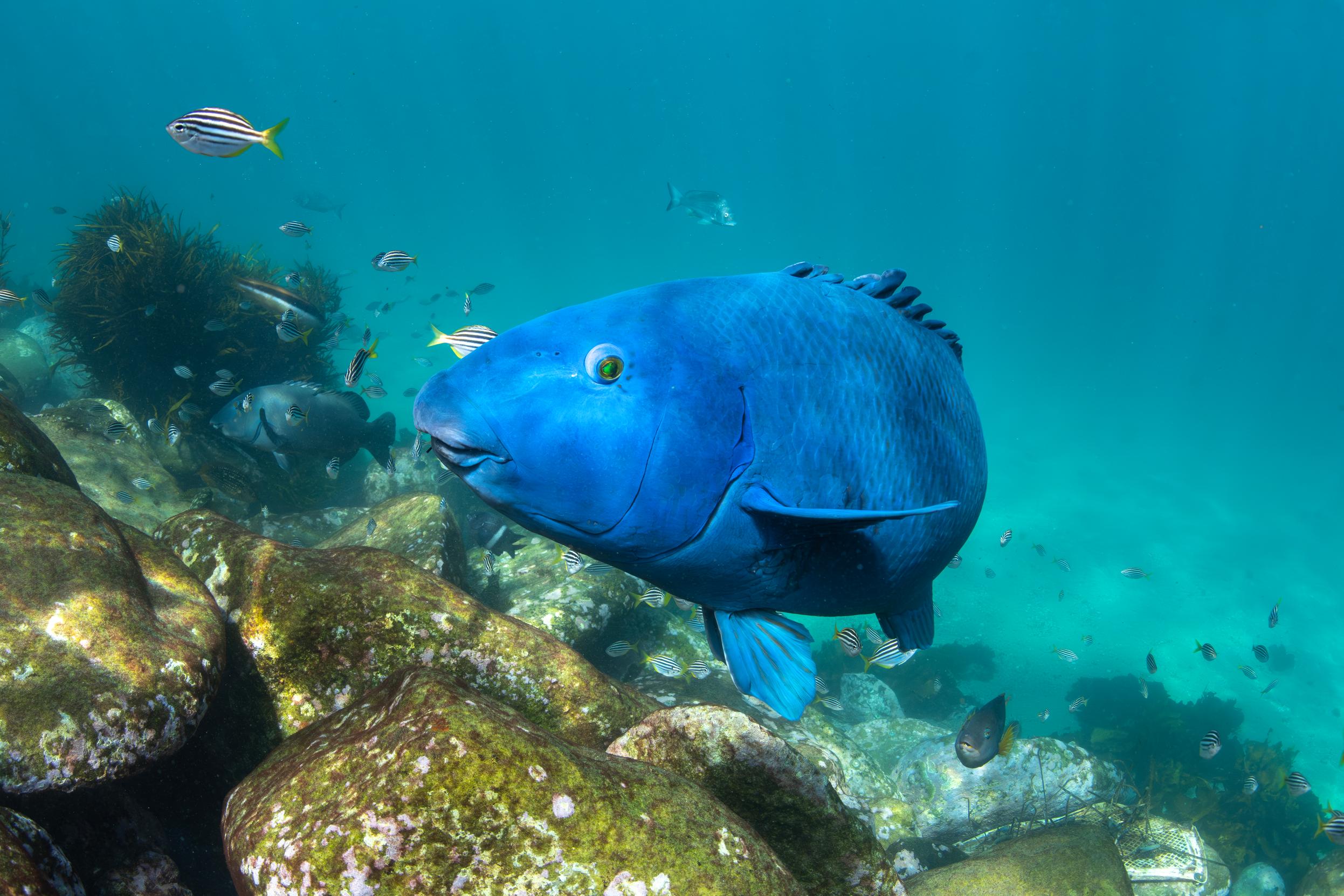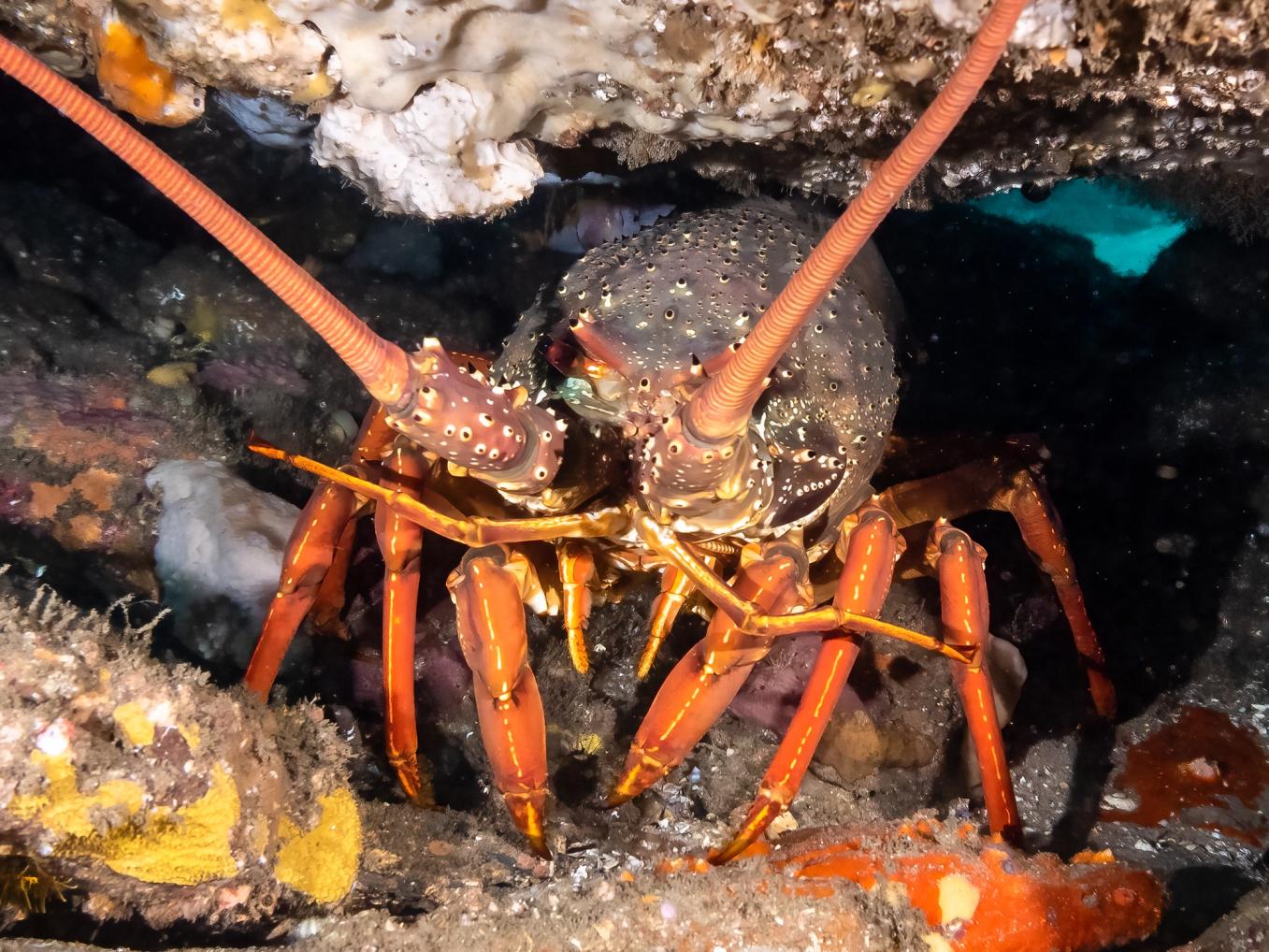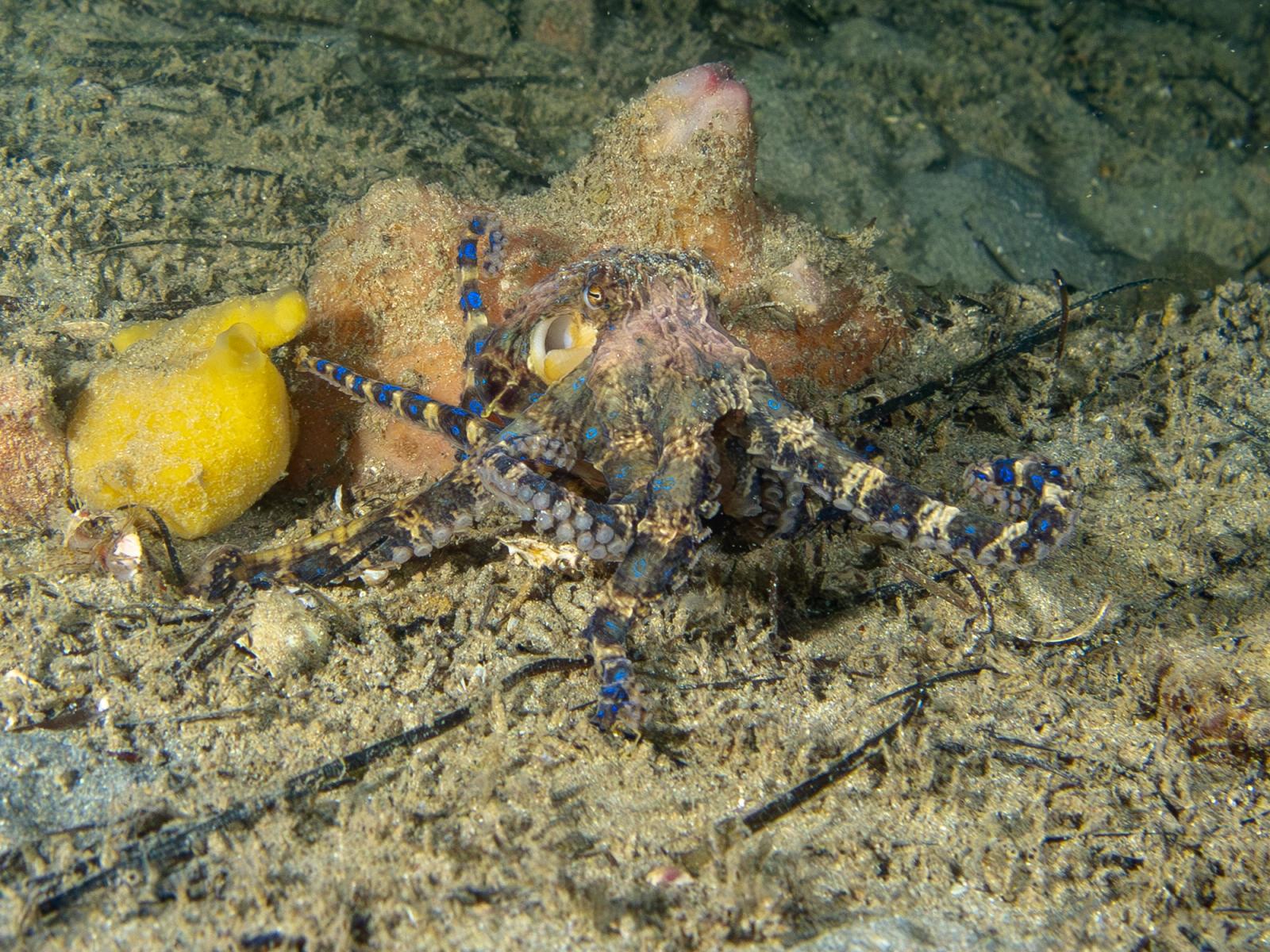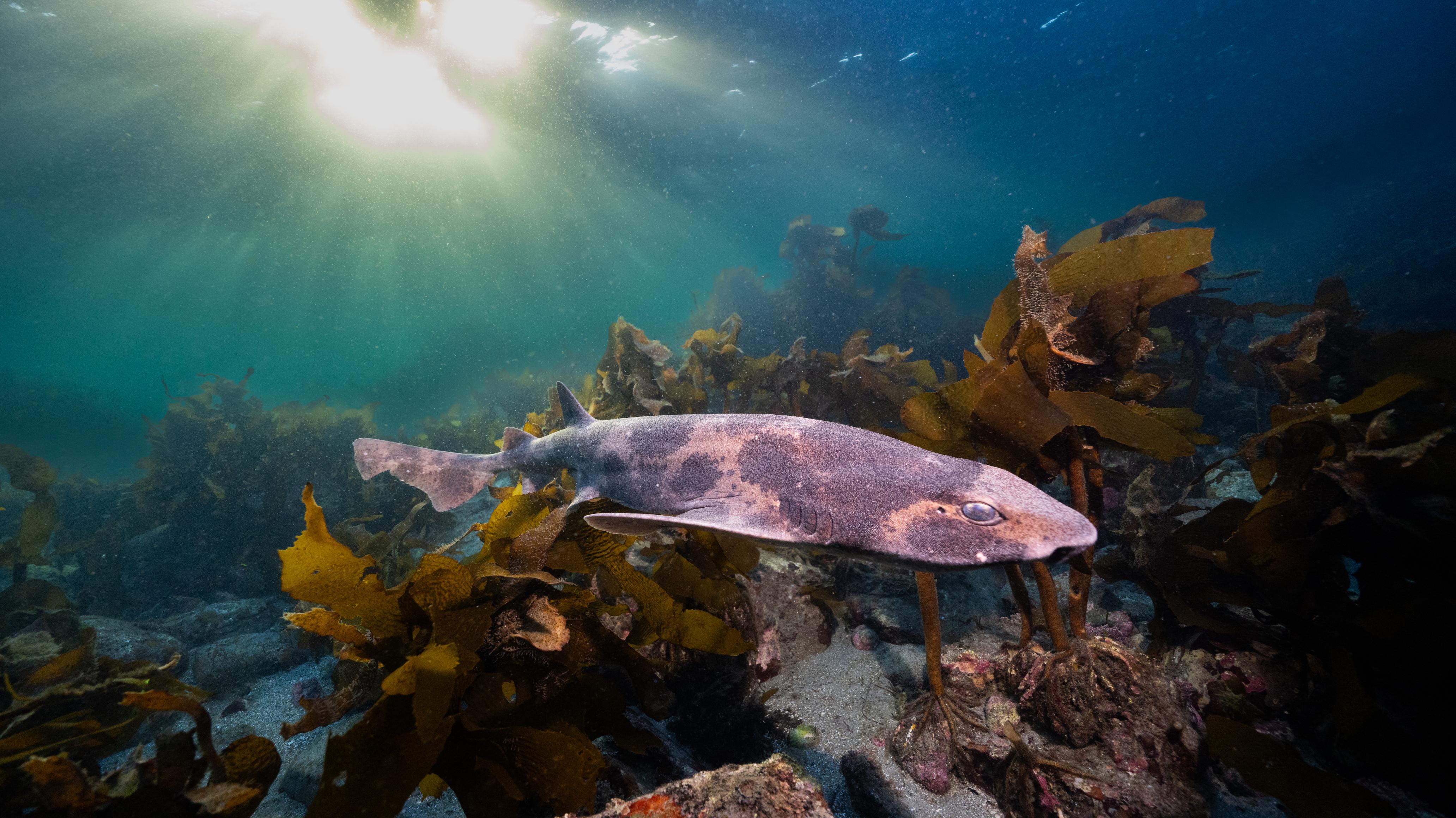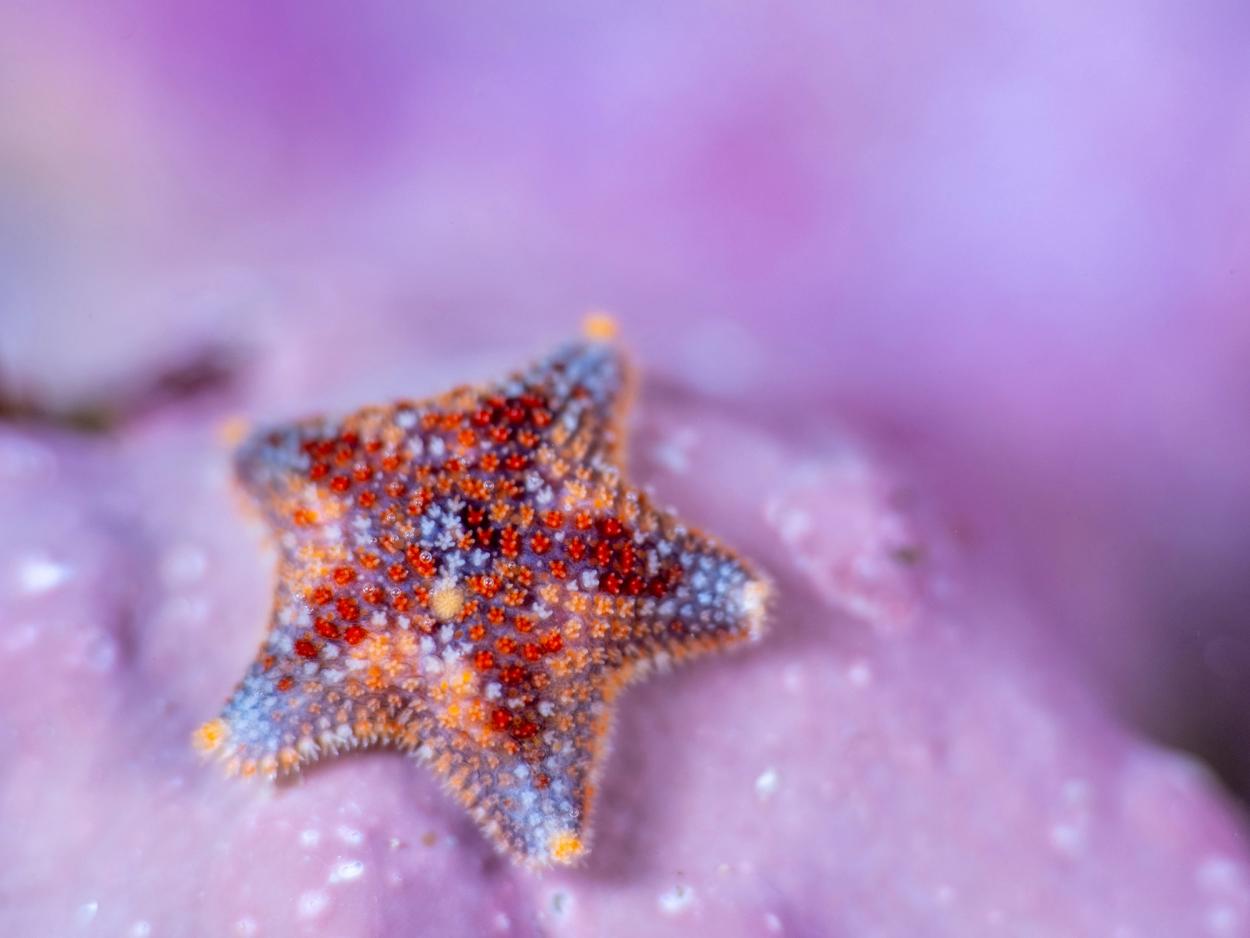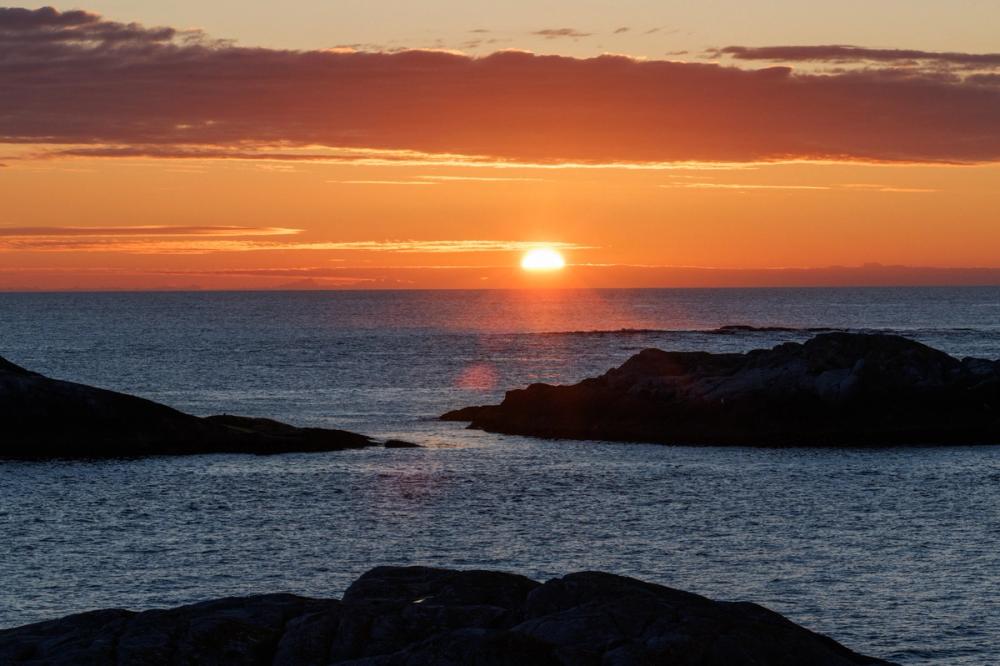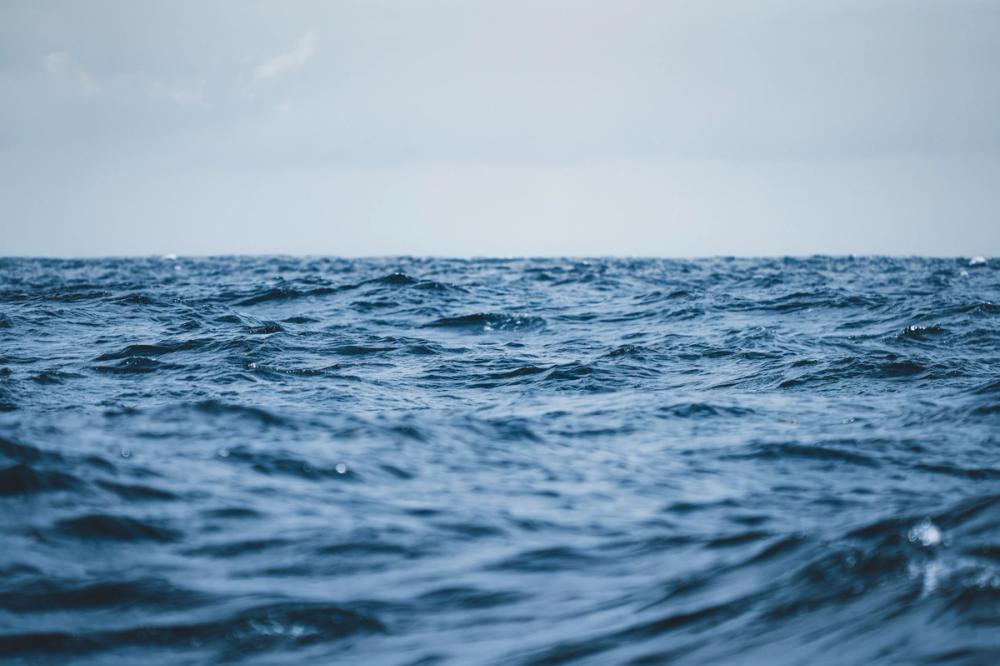What is happening to Australia's Great Southern Reef?
Not only do kelps sequester vast amounts of carbon, their stems and fronds create habitats for a diversity of organisms to thrive, forming the foundation of a rich ecosystem. © Stefan Andrews
6 January 2025
The Great Southern Reef is among the most productive and dynamic ecosystems on Earth. But it’s facing incredible challenges, driven by climate change, overgrazing, and pollution. In response, community members, universities, NGOs, and businesses are working to restore these incredible ecosystems.
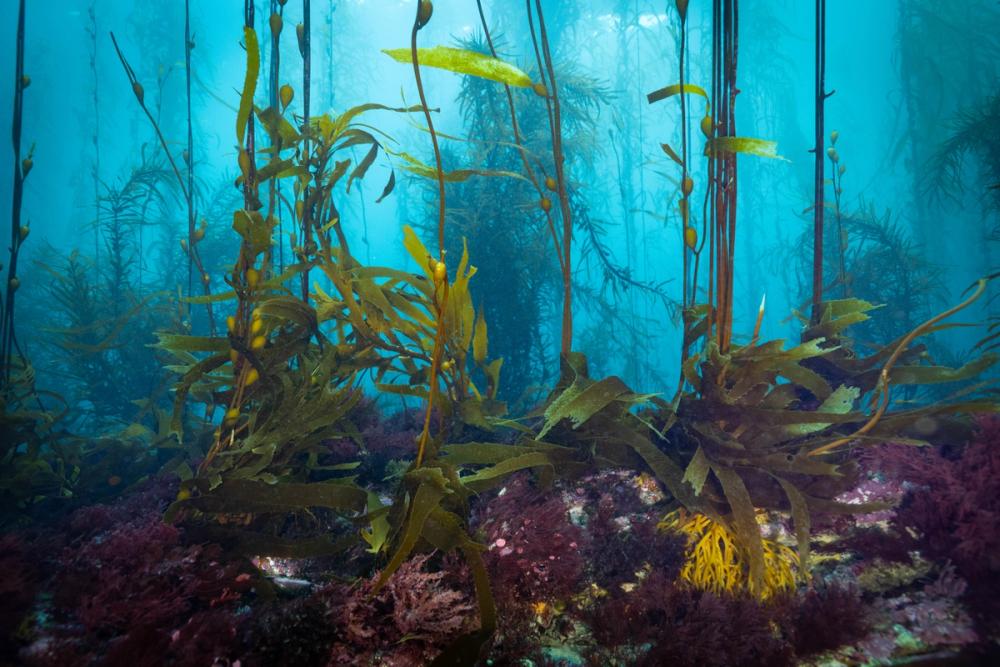
Not only do kelps sequester vast amounts of carbon, their stems and fronds create habitats for a diversity of organisms to thrive, forming the foundation of a rich ecosystem. © Stefan Andrews
Australia's kelp forests are the foundation of the Great Southern Reef (GSR), an interconnected system of rocky reefs stretching approximately 8,000 km along the southern coastline of the continent. Together, the GSR creates the world’s largest continuous kelp forest ecosystem. These forests are dominated by species such as Ecklonia radiata (golden kelp), Macrocystis pyrifera (giant kelp), and Phyllospora comosa (crayweed), which provide complex structural habitats for thousands of species. The GSR is home to weedy sea dragons, fur seals, giant cuttlefish, sharks as flat as a pancake, sharks as long as a basketball hoop is tall, and thousands of other marine invertebrates, fish, mammals, and seaweeds. Not only are these exceptionally wondrous animals, but many of them exist nowhere else on Earth. In fact, there are more unique species on the Great Southern Reef than there are on the Great Barrier Reef.
Over two-thirds of Australians live within 50 km of a kelp forest. This confluence of geography places Australians in close contact with these vital ecosystems. And do these vital ecosystems benefit the people that live right next door? You bet! The economic value of the Great Southern Reef over the next 20 years is estimated at $29.4 billion and is linked to major abalone and lobster fisheries, cultural practices and traditions, wildly beautiful dive sites, marine life out of a story book, and so much more (Eger et al., 2022)
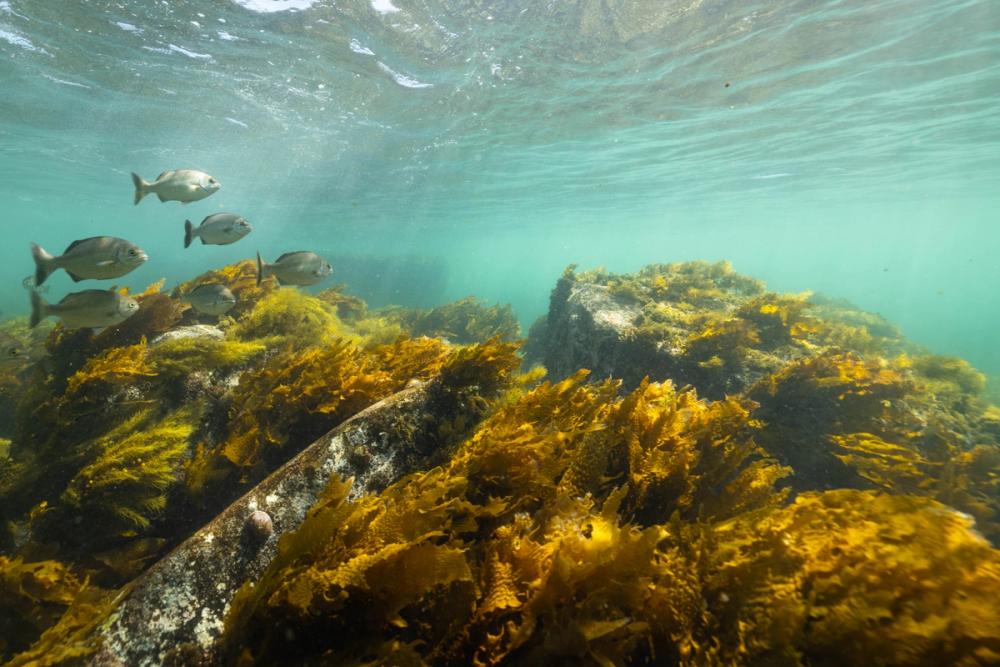
Golden kelps like these form the backbone of the Great Southern Reef. In ideal conditions, they can grow up to 50 cm per day, forming towering underwater forests that provide habitats for a myriad of marine life. ©Stefan Andrews
Decline of kelp forests: A global and local crisis
Kelp forests are in decline globally, and Australia is no exception. Several regions, including Western Australia, South Australia, Tasmania, and New South Wales, have experienced significant losses of kelp coverage. The primary drivers of this decline include ocean warming, overgrazing by herbivorous species, and pollution.
Western Australia
You’ve doubtlessly experienced some hotter-than-average summers lately. Or perhaps you have gotten news alerts about the dreaded onset of an incoming heatwave. While marine heatwaves don’t often make the news, the effects can be even more devastating than those on land. In the oceans, the water doesn’t fluctuate as much as it does on land and animals are adapted to a specific range of temperatures. So, when the thermostat pops, these ecosystems are in trouble. In Western Australia, the 2010-2011 marine heatwave, combined with the southward expansion of subtropical fish due to ocean warming, led to the loss of golden kelp and Scytothalia dorycarpa forests across approximately 100 km of coastline. That’s the distance from Rome to Naples.
It was the warm waters of the East Australian Current that Marlin and Dory rode to find Nemo in Sydney. If they tried to make the same trip today, they might miss their stop altogether and end up in Tasmania.
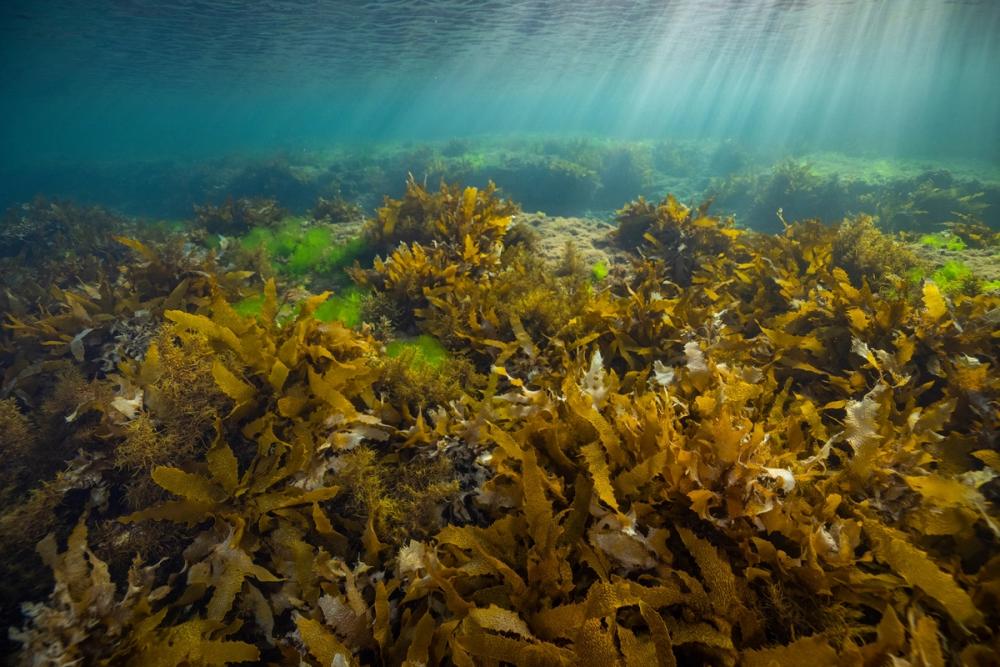
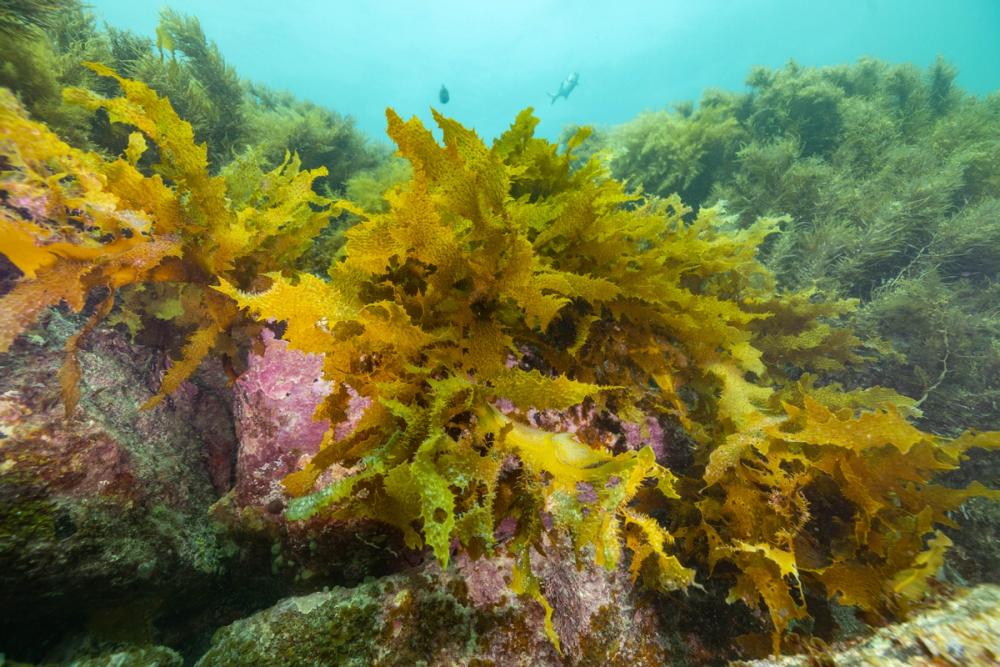
Golden kelp (Ecklonia radiata) is the dominant kelp species found off the coast of Western Australia. They belong to the order Laminariales and can grow very large, canopy forming, dense underwater forests. ©Stefan Andrews
Tasmania
The East Australian Current (EAC) was one of the unsung heroes in Finding Nemo. Marlin and Dory rode the warm waters of the EAC so they could find Nemo in Sydney. A lot has changed since the movie was released and if they tried to make the same trip today, they might miss their stop altogether and end up in Tasmania. That is because warming oceans have changed the current’s route through the ocean and caused it to carry warm, nutrient-poor water farther south. These new conditions opened the door for the invasive long-spined sea urchin, Centrostephanus rodgersii to proliferate along the coast in the millions. The impact has been truly devastating. In only a few decades, the giant kelp forests of Tasmania have declined by over 95%.
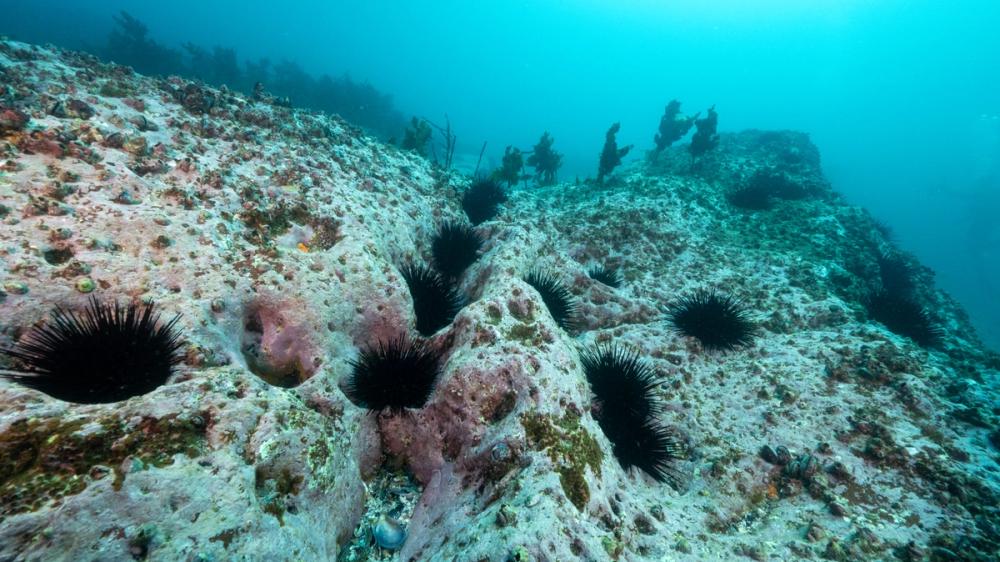
Warming oceans have shifted the East Australian Current, which has in turn brought nutrient-poor waters and long-spined sea urchins to the Tasmanian coast—with devastating consequences. Sea urchins can transform thriving forests into desert-like barrens in a matter of months. © Scott Bennett
The Sydney coastline
All rivers lead to the ocean and the ocean often inherits its problems from land. To this date, many cities discharge their untreated sewage just off their coastline. The oft touted “world class”, harbour city of Sydney used to fall into this category, and the water quality around the coast suffered. The beautiful waters were often unfit for human activity after a rainstorm. Decades of discharging raw sewage into the coastal waters caused crayweed forests to disappear from within 70km of metropolitan Sydney. While the city has since corrected course and cleaned up its waterways, crayweed is still missing from most parts of the otherwise beautiful Sydney coastline.
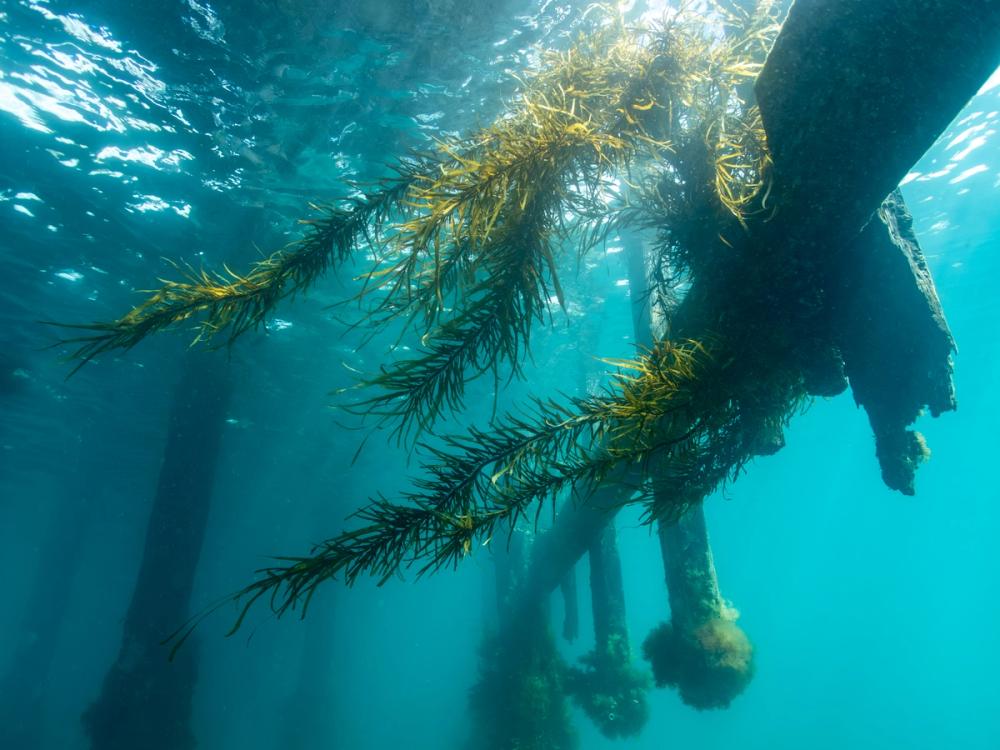
Crayweed displays remarkable adaptability, thriving in bustling urban spaces like Sydney Harbour. Pollution from the city caused crayweed to disappear from within 70km of metropolitan Sydney, but restoration efforts are bringing it back. In recent years, crayweed has become a symbol of successful restoration. © Imogen Manins
Underwater restoration down under
Planting a kelp forest is a lot like planting a forest on land, except you cannot breathe and you are digging into solid rock as opposed to soil. Needless to say, restoring kelp forests is a complex and resource-intensive process. Traditional restoration methods include removing the agents of decline (e.g., culling sea urchins), or more active restoration, which involves transplanting adult or juvenile kelp from donor sites. Historically, there has not been a whole lot of restoration work in Australia. There were a handful of early efforts to restore Giant Kelp in Tasmania in the early 2000s but restoration in Australia didn’t really take off until the 2010s.
Operation Crayweed
Operation Crayweed was launched in Sydney in 2011 and is now one of the longest continually running kelp restoration programs on the planet. It is led by a dedicated team of marine scientists who have been working tirelessly to restore Crayweed to its former range. The process is labour-intensive and delicate. It begins with collecting healthy Crayweed from areas where it still thrives and transplanting it onto Sydney’s rocky reefs. The scientists carefully secure the seaweed to the rocks, giving it a chance to take root and flourish.
Their efforts have paid off. Since the first trial in 2011, Crayweed has begun to re-establish itself, with new patches spreading naturally across the seabed. These restored forests are not just surviving—they are thriving. And as Crayweed returns, so does the rich biodiversity that depends on it.
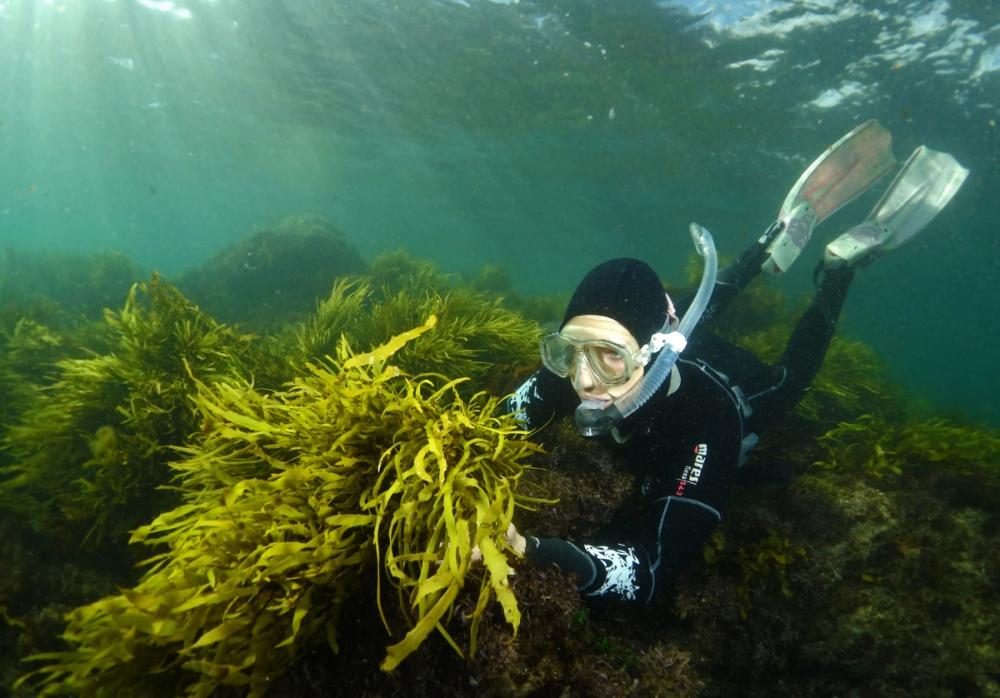
Restoring kelp can be extremely labour-intensive. Divers collect crayweeds from healthy forests, and transplant them to areas they wish to restore. Initial efforts by Operation Crayweed had a success rate as high as 70%. © John Turnbull | Operation Crayweed
But the success of Operation Crayweed isn’t just about the science. It’s about people, too. The project has tapped into the power of art and storytelling to capture the public’s imagination. In collaboration with local artists, the team has created striking public art installations at high-profile events like the Sculpture by the Sea, drawing the attention of hundreds of thousands of visitors.
The project’s outreach doesn’t stop there. Through educational programs, school workshops, and even a crowdfunding campaign that invited people to “plant an underwater tree for Christmas,” Operation Crayweed has engaged the community in ways that are both meaningful and fun.
Planting a kelp forest is just like planting a tree, except you cannot breathe, and you are digging into solid rock instead of soil. Easy, right?
Today, Operation Crayweed is expanding, with new sites being seeded along the coastline. The goal is to restore Crayweed to its former range, creating a continuous stretch of healthy seaweed forests that will support marine life and enhance the coastal ecosystem. The project has garnered support from government agencies, philanthropists, and everyday citizens, all united by a shared vision of a healthier, more vibrant Sydney Harbour.
As the Crayweed forests continue to grow, so does the sense of hope and optimism surrounding their restoration. Operation Crayweed is more than an environmental success story; it’s a testament to what can be achieved when science, art, and community come together to heal our natural world.
Rewilding Tasmania’s kelp forests
The permanently warmer waters, persistent sea urchin population, and the rapid decline of giant kelp have left scientists, conservationists, and local communities scrambling for solutions. Previous attempts at restoring these vital underwater forests failed to take root, and a new innovative and highly collaborative approach began to take form. The restoration of Giant Kelp in Tasmania involves a combination of industry collaboration, innovative research, and cutting-edge tools to bring the kelp forests back from the brink.
The science team at The Nature Conservancy is studying historical data and current oceanographic conditions to identify areas where kelp once thrived and where it’s most likely to survive in the future. This targeted approach maximises the chances of successful restoration, ensuring that new kelp plants can establish themselves and begin to rebuild the ecosystem.
Working smarter and not harder, the team is now using innovative new outplanting techniques to plant giant kelp at the most suitable sites identified by the modelling. These trial outplants will be a key trial run to determine where they should get to work with the hard yards, restoring giant kelp at the scale of tens of hectares.
Still, the team is faced with permanently warmer sea temperatures and lower nutrients, and giant kelp likes it cold and nutrient rich.
In any population of people, there is variability in key traits like height, eye colour, voice pitch, love or hate of cilantro, and the same is true for giant kelp. Perhaps then, there are some giant kelps out there which like the heat or do better with lower nutrient levels. While kelp forests are much simpler than humans, they actually have a similar number of genes, and finding the ones responsible for heat tolerance is excruciatingly hard work.
Wouldn’t it be nice then if a computer could help us in this ginormous task? Enter AI and the folks at Google Australia’s Digital Futures Initiative. Partnering with the Institute of Marine and Antarctic Science (IMAS) and the Commonwealth Scientific and Industrial Research Organisation (CSIRO), the Google Team has pledged their support to identify parts of the genome of the remaining giant kelp which might help them survive in these permanently warmer oceans. Support like this from Google Australia are important pledges in the Kelp Forest Challenge, a global initiative where anyone, from snorkeller to CEO can get involved in kelp forest conservation.
The list of hurdles to restoration in Tasmania isn’t short. There are now millions of the invasive long-spined sea urchin in Tasmania and restoration programs simply cannot manage them all on their own. Luckily, sea urchins are often a tasty treat, and their by-products can be used for things like fertiliser. But collecting them is difficult and expensive. One local fishing group managed to put a dent in their numbers by creating a harvest subsidy for the long-spined sea urchin. Importantly, the divers work closely with IMAS to monitor the results. There are now close to 1,000 hectares of kelp forest habitat under sea urchin management thanks to this partnership.
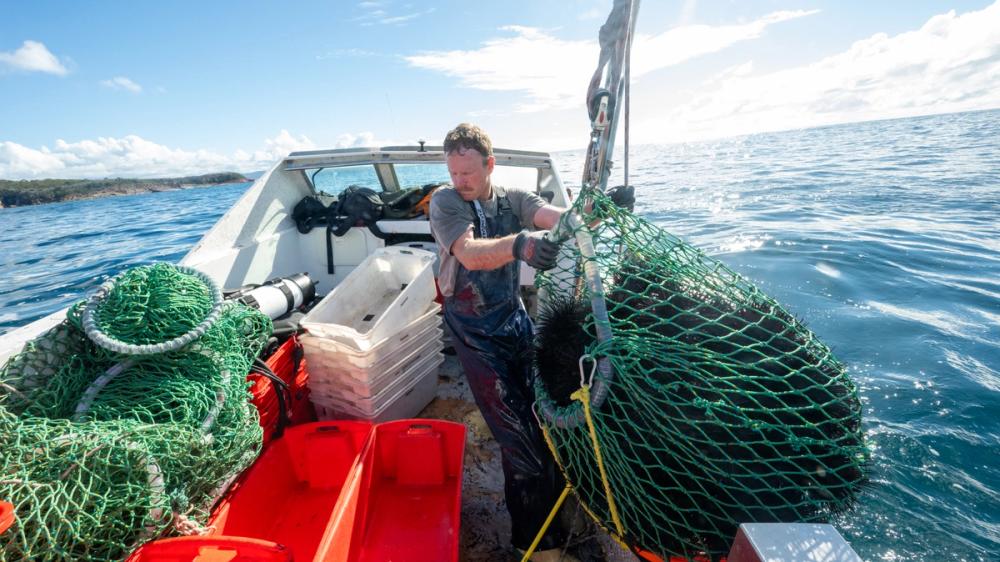
The edible part of sea urchins are their uni (gonads), which have a unique and delicate flavour, often described as briny, creamy, and slightly sweet, with a rich oceanic taste. © Stefan Andrews
How to plant a million hectares of kelp forest?
As we said, planting a kelp forest is just like planting a tree, except you cannot breathe, and you are digging into solid rock instead of soil. Easy, right? While restoring a kelp forest is possible and a truly meaningful activity, it requires a lot of hard work to get the kelp to come back. Many current restoration methods do indeed work, but they may be too expensive or too technical to scale up to 10s or 100s of hectares of kelp forest habitat—which is the scale at which we’ve lost them.
Enter “green gravel”, a novel technique that involves cultivating young kelp on small pieces of gravel in land-based facilities. These gravel pieces, embedded with growing kelp, are placed in the ocean, where the kelp can then attach to the seafloor and eventually grow into thriving underwater forests. This method was initially tested in the fjords of Norway, where it showed promise due to its simplicity, cost-effectiveness, and adaptability. Still, the method needed refining so that it could be applied in a variety of different marine environments, from the sheltered waters of the fjords to the open and exposed waters of the Australian coast.
There are no easy answers. Kelp restoration still requires a lot of research and development. Even though kelp forest conservation receives only a fraction of the funding and support of other marine ecosystems, the people working to save them are all rowing in the same direction, and working together to give us the best chance to save these crucial ecosystems.
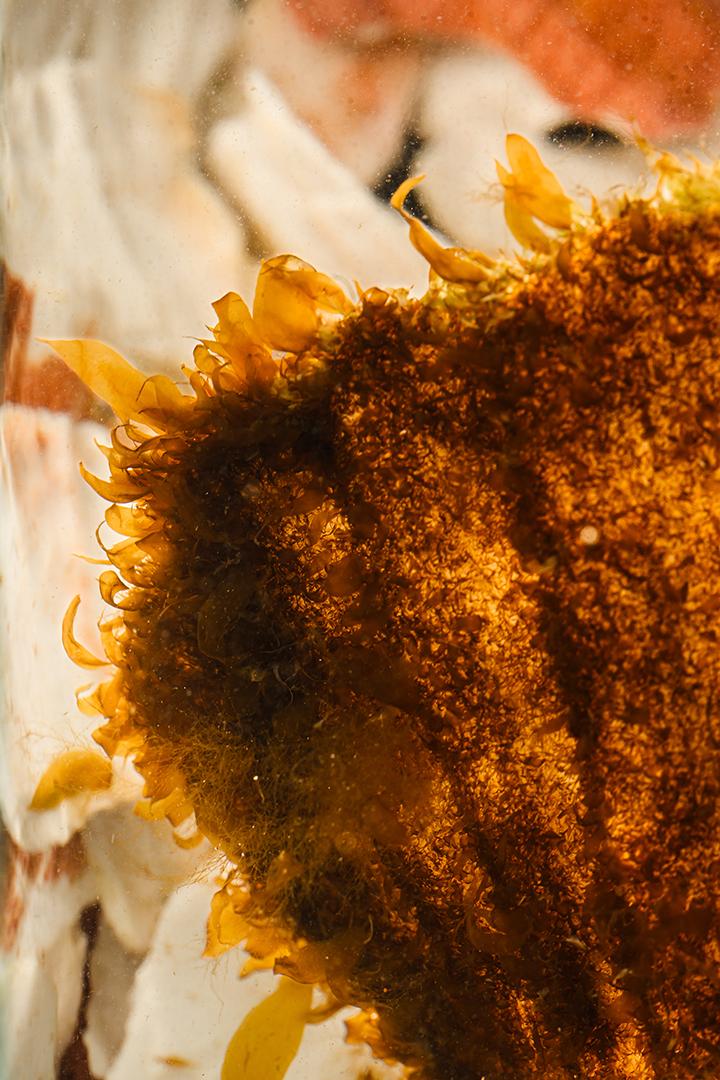
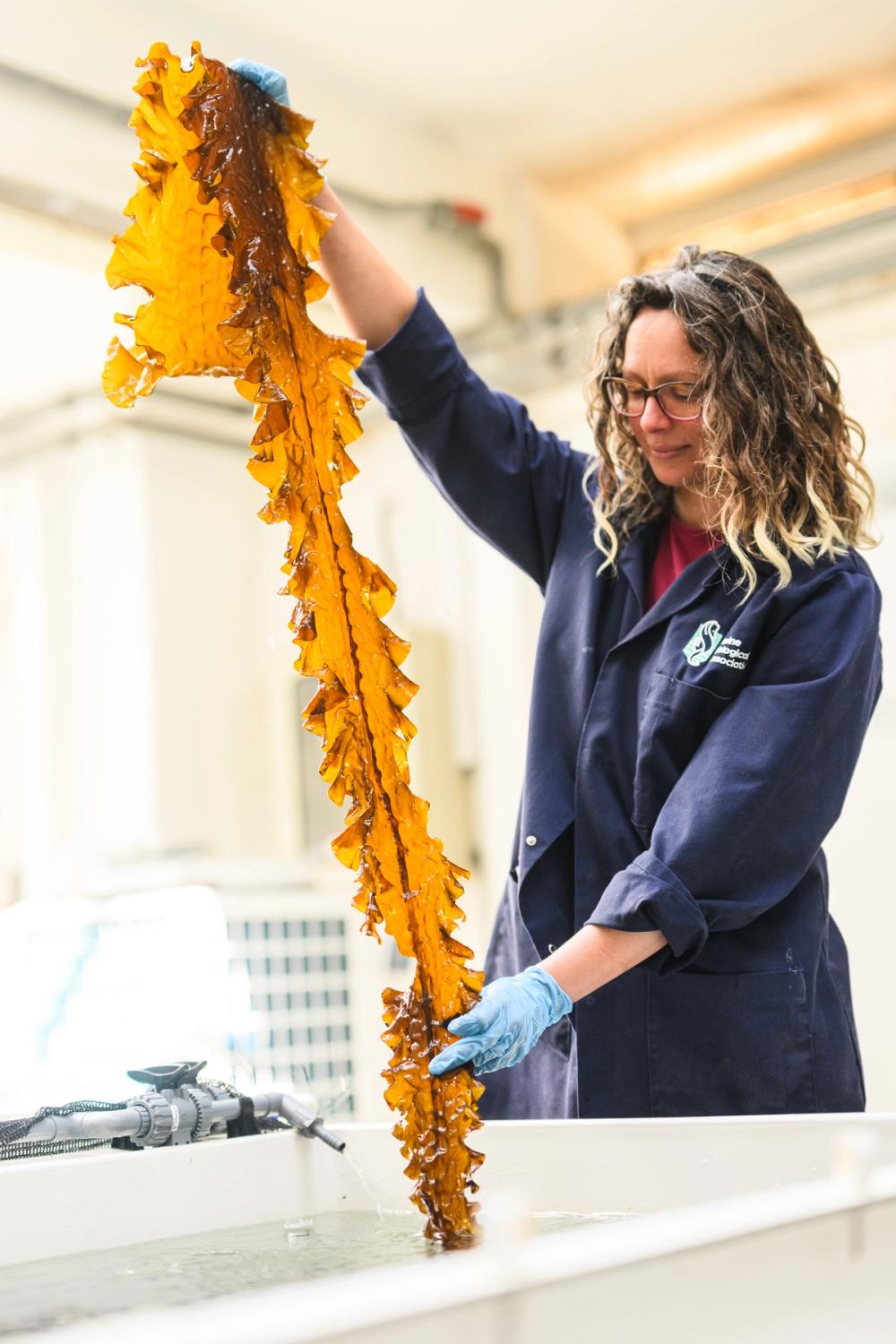
The green gravel technique uses spores from mature kelps to cultivate kelp sporelings on pieces of gravel or scallop shells (left). Once the sporelings grow into tiny kelp, they are dropped into the ocean, where they settle to the seabed, take hold, and, hopefully, thrive. © Marine Biological Association
The Green Gravel Action Group is based at the University of Western Australia and has grown to a truly global collaboration. There are now 67 members across 25 projects in nine countries, all collaborating, sharing results, and honing the art of getting kelp to grow under water. Going forward, the group is testing different sizes of gravel, site selection criteria, and how to best engage local communities and policy makers in the kelp forest restoration process.
Building a global movement
Heading back to Sydney, we are thinking local but acting global. Headquartered overlooking a kelp restoration site in Lurline Bay, the Kelp Forest Alliance (KFA) is a globally minded NGO that wants you to help the kelp. Together with hundreds of kelp lovers all around the world, the KFA has launched the Kelp Forest Challenge, a global mission to restore 1 million hectares of kelp forests by 2040. This Challenge thrusts kelp forests into the global spotlight and works to ensure that kelp forests are indeed represented on the world stage. To date, 55,000 hectares of kelp forests have been pledged for restoration from tens of thousands of hectares in Korea to community-led projects restoring kelp forests in their blue backyard. Anyone or any organisation can get involved.
So, what can you do?
Think about how your business can move towards being nature positive. That is, how can you support work that regenerates nature rather than depletes it. Tech and legal experts can help their local projects with technical challenges and navigating permissions. Kelp farmers can provide seed stock and baby kelp for restoration. Tourism operators can promote kelp forests and their creatures—think of the growing fame of the giant cuttlefish breeding season in Whyalla.
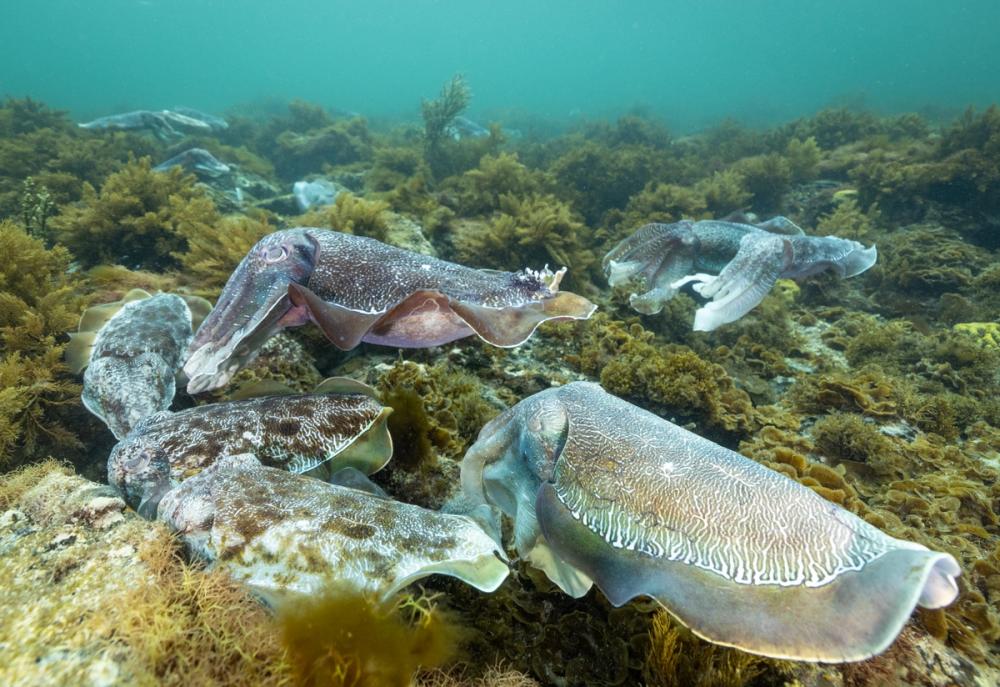
Between May and August every year, thousands of people converge in Whyalla, South Australia to dive with mating cuttlefish. Small cuttlefish rely on trickery and deception, changing colour and posing as females to avoid detection by larger, dominant males, so that they can sneakily find themselves a mate. © Stefan Andrews
And if you’re a keen community member? You can help by volunteering your time with citizen science projects like the Reef Life Survey, forming community groups to steward and protect your patch of the ocean, or by contributing to your local kelp restoration project. Hop on the Kelp Forest Alliance website to find a map of kelp restoration projects all around the world.
What lies ahead?
Kelp forests are an integral part of the Australian coastal experience, from surfing outside of Sydney to Scuba diving with sea dragons, we need healthy kelp forests for healthy oceans. So, what does the future hold for kelp in Australia? Well, there is certainly cause for concern, waters off of Australia are some of the fastest warming waters on the planet. But there is also plenty of optimism in the Land of Oz as kelp forests along the Great Southern Reef become more recognised and the number of people working to save our kelps continues to swell.
We must commit to protecting what we have left, restoring areas that have been lost, developing cutting-edge approaches to restoration, and celebrating the life that kelp forests engender in and out of the water.
With these commitments, we can safeguard kelp forests and their milieu of biodiversity. Yes, we believe that the kelp forests of the Great Southern Reef may continue to be great for many years to come.
Share this story
- Ecosystems and habitats
- Ocean of hope
- Threats
